1926 Story and Clark Player
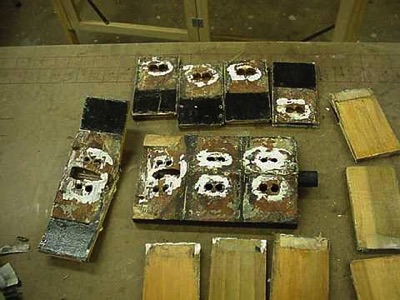
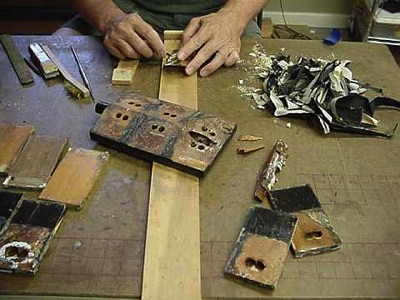
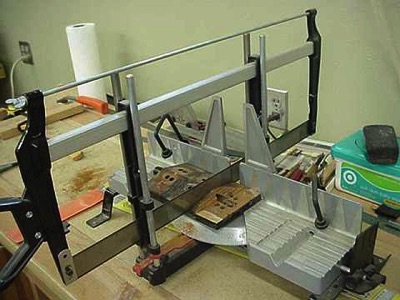
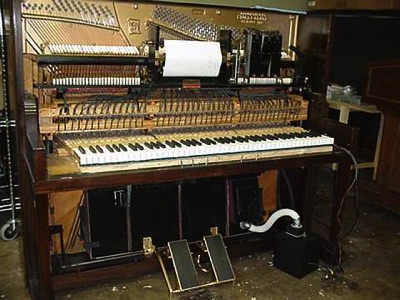
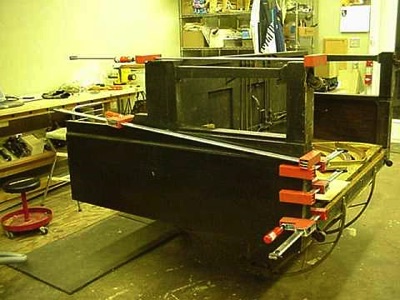
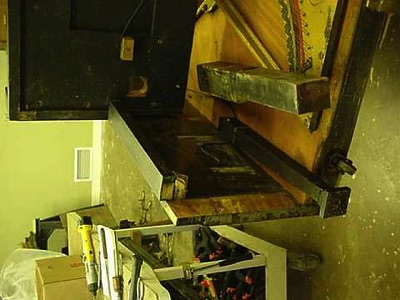
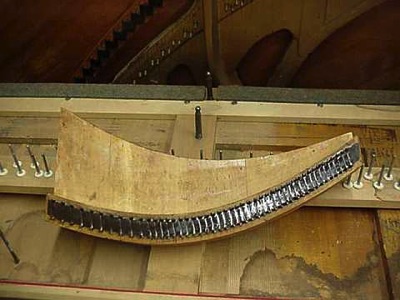
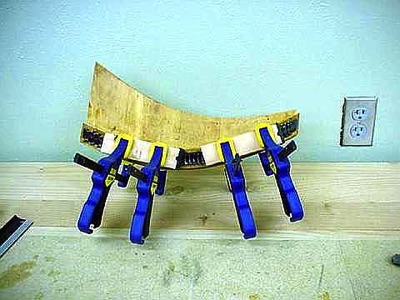
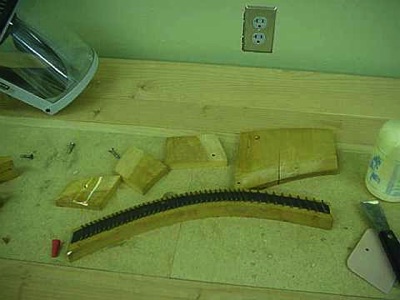
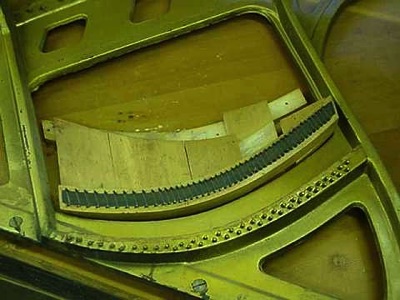
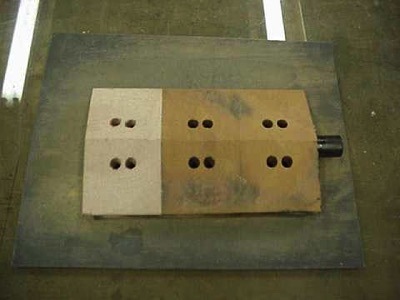
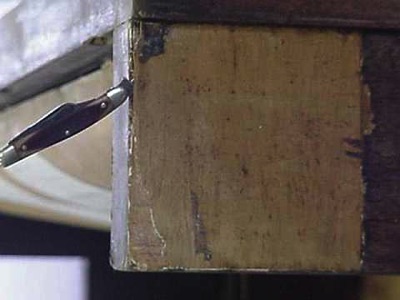
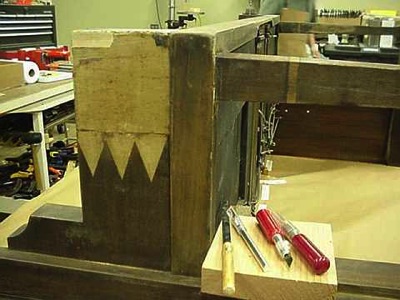
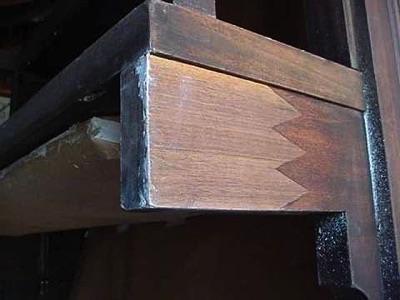
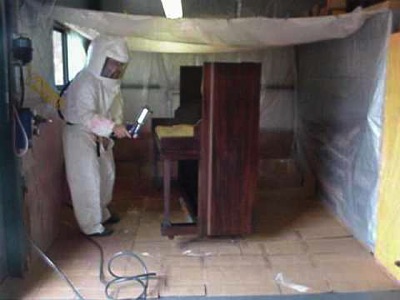
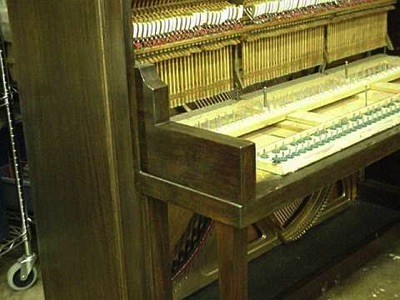
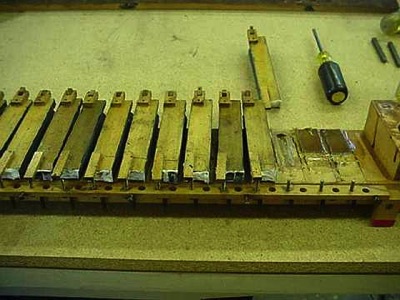
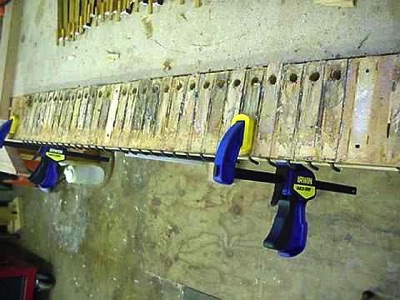
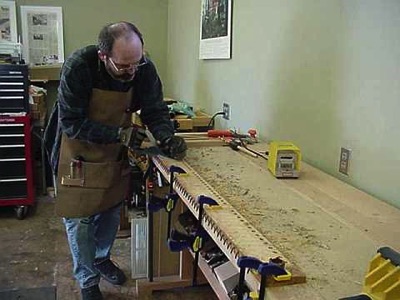
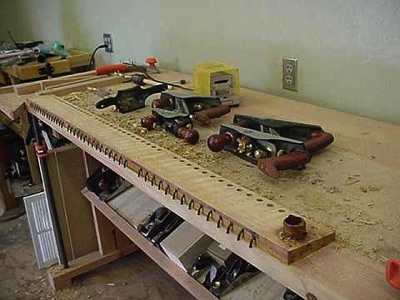
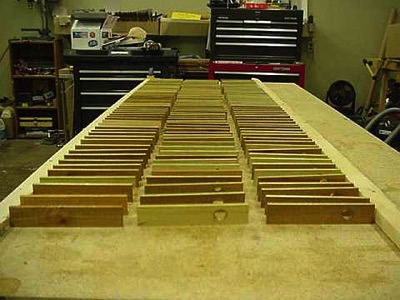
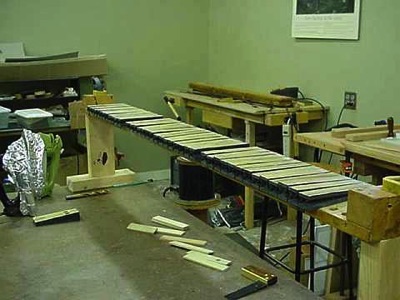
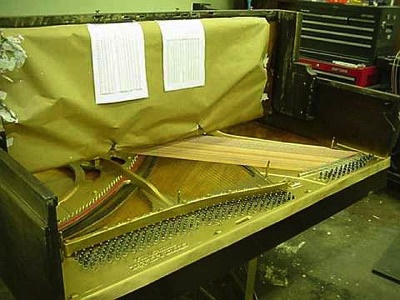
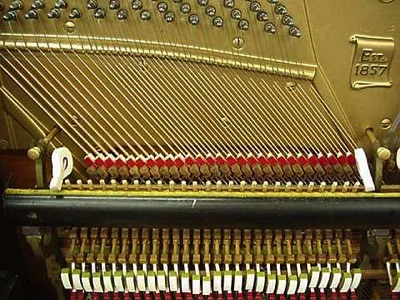
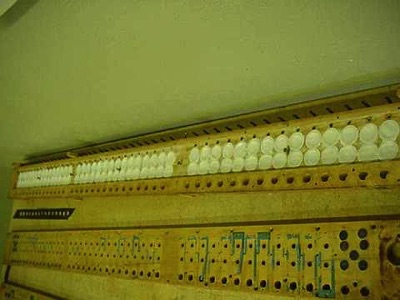
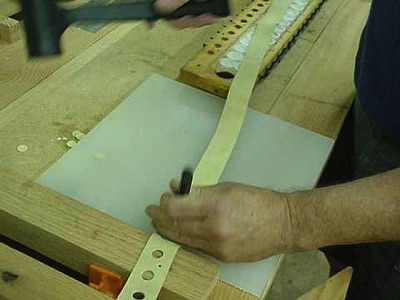
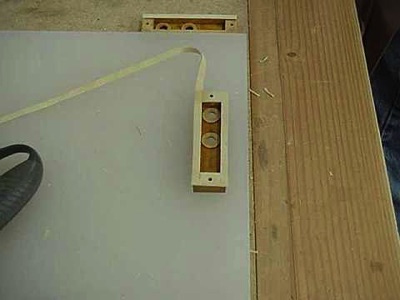
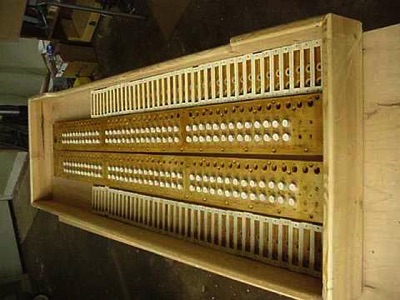
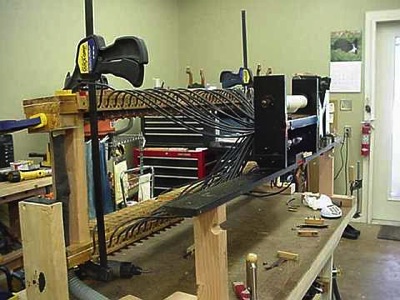
Rebuilding a player piano that has been "rebuilt" before can be a daunting task.
This wind motor was constructed of solid mahogany. When we disassembled it,we were pretty disappointed to find this mess.
A great time to practice anger management!
This is one example of the problems we encountered with the player action. Fortunately, the piano itself was relatively untouched.
The Nobex saw is unsurpassed for removing the damaged material accurately to the proper depth.
We find hand tools indispensable in our player shop.
We infilled new mahogany from our stock, shaped, bored and profiled to match the trunk.
After glue sizing, the trunk is ready for assembly to the recovered pneumatics.
These pneumatics are basically trash, we will make a new set.
The old pneumatics were glued down with an inappropriate adhesive. We were able to remove them but with some damage to the decks.
A scrub plane levels the decks.
We follow up the scrub plane with smooth planes, scraper plane and a cabinet scraper.
New pneumatic leaves machined from seasoned poplar, sealed with shellac.
Pneumatics covered and glued to the decks.
Each pneumatic is tested before and after mounting.
New pouches are one key element for making the player perform again.
Punching gasket material requires a big hammer!
Each valve cover receives a custom made valve cover gasket.
New gaskets and re leathered valves, it's starting to come together.
Test jig for checking the player before final assembly. It is much easier to find and fix leage now than after final assembly.
The bass cheek veneer was damaged by a previous futile attempt at repair and careless moving. In the process, the glue joint between the cross banding and the core lumber was compromised.
Cross banding has to be securely attached to balance the veneer. Once repaired, the application of the veneer patch can begin.
New cross banding is patched in, the original is glued back down.
The veneer is patch will need to be stained, filled and finished to match.
One of the more common problems with older upright pianos is separation of the toe and leg.
It's no coincidence that this is the same end of the piano that sustained damage to the cheek veneer. Careless piano moving over the years has destroyed many fine instruments.
With a little patience, the proper adhesive and mechanical fastners we are back on solid footing.
Supplied air protection and efficient air movement during the top coat process.
While not invisible, the patch blends well with the original veneer.
The bass bridge apron had separated in several places and fell out in pieces when the anchor screws were removed.
Preparation for repair of the apron and epoxy repair on the bridge cap.
Apron repair completed and glued to bridge.
Finished repair combined with rescaled bass strings put the bass back in this piano!
Restoring the soundboard and bridges are key to reproducing the sound of 1926. New custom scaled bass strings create smooth, consistent bass response. Matched with new hammers the result is awesome.
New strings, tuning pins, dampers and hammers help the piano produce the sound, touch and repetition to match the restored player system.
Time for a test drive before final assembly, it passes with flying colors. This piano rocks!
© Ward and Probst, Inc-1998-2014